 Story and photos by Roz Neave
Story and photos by Roz Neave
It has been a while since THM visited George Sanna at home at Chatham Park. When I arrived George was in his ‘office’, surrounded by a group of disciples, obviously deep in serious discussion. Later George told me the discussion had been with the parents of a young rider, about horse selection…
“The concept of a kid and a young horse learning together, I think is baloney. It so rarely works, there is the odd legend, Kermo (Jamie Kermond) and Stylish King (Jamie’s 2006 WEG ride), but really it has been a graveyard of broken hearts and broken horses and broken parents. You have got to be a pretty good rider before you are going to have a positive impact on a young horse. That idea of them growing up together, really very rarely works, and it is often dangerous.”
“When I was a kid, that’s what we did, we got horses off the track, or we got them out of the sale ring, but a lot of us are physically damaged as a result of those experiences – three back operations and lining up for another one… There was a different demographic, there wasn’t the money in the sport, and there weren’t the horses to buy. The ones that were around and jumping were orang-outangs because they had been trained so badly, they were just as dangerous as the horses off the track.”
“There were examples of people doing it well. I remember Glenn Fryer used to live and train with Art Uytendaal, and he had a good, well-structured intro into the sport, which is rather like kids do now, when they have a coach or a trainer. But he was almost the only one I can think of back then. Vicki Roycroft and Colleen Brook were up in Sydney and they went to Karl de Juranek, but most of us just got on Thoroughbreds and pointed them at the jumps. We learnt, but it took me twenty years to learn what I’ve taught Sav (Savannah Hopkinson – our ‘pupil’ for this story) in two years, because there was no one to tell us, you just learned by experience. The kids today are really lucky that there are a bunch of coaches around now that have really done the hard yards and ended up very good riders and are now in a position to coach.”
George then started working with Savannah Hopkinson and her mare, Zensation. It was Wednesday, and they were preparing for a weekend show…
As always, George’s commentary is wise, and often witty:
“Sav has had the mare for just on two years, and she initially jumped Young Riders with her. It has been a successful combination from the beginning. Sav has only just turned 17. She had good success with her in Young Riders, then we moved into Mini Prix and in the last six months, she’s started to jump the big class at the shows we’ve been doing. At Canberra Royal, she won the Grand Prix in Part 1, then she won the Grand Prix at Castle Hill show. She has just been building up.”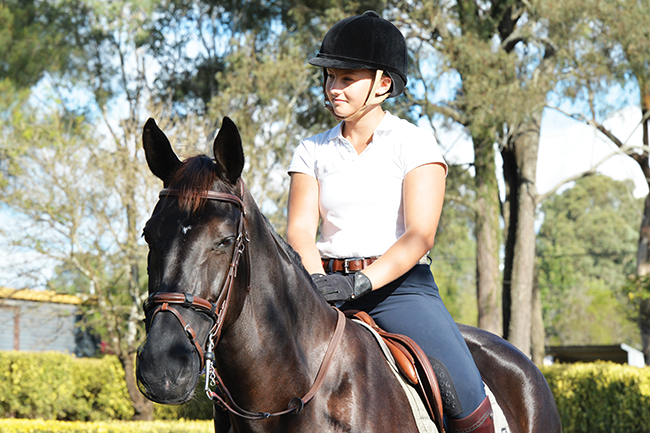
“At Sydney Royal she started two horses in Section 2, and they both went very well. I think she won two or three out of the four classes in Section 2. Then she jumped in the Grand Prix at Sydney Royal, which is normally a World Cup, but this year it wasn’t. She ran third in that, the horse jumped very well.”
“She has been gradually stepping up…”
What are Savannah’s special qualities and how have you developed them?
“The starting point is that she has a very good understanding of jumping-based dressage, that puts her ahead of many. She is a very good flat rider. She has been with me for about two and a half years, before that she had been training with Dave Lever, who has obviously done a good job, she had good basics. The family is quite friendly with Malcolm Barns, and I think he gave her a little help with her dressage. She was only fourteen when she started with me, a kid, but a smart kid, she picks stuff up. I think that dressage knowledge gives her an edge in the group of young riders – we’ve got some super talented kids in her age group – all of them girls actually, and several very very good riders, but Sav has that little edge.”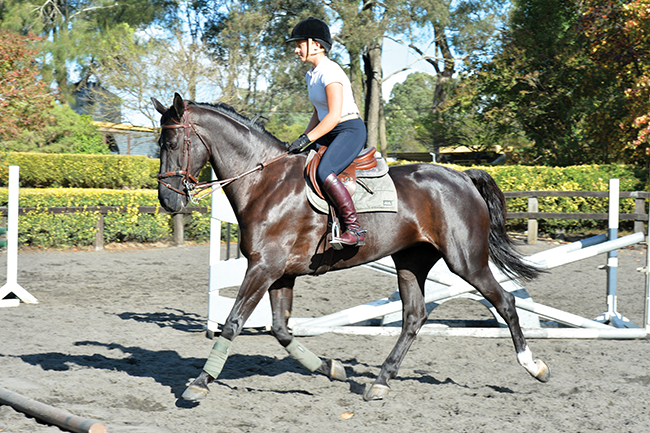
“I think as a jumping rider, when she first came here, she had good basics, but she didn’t have a theory, she just rode the jumps. She didn’t really understand the canter, she didn’t understand pace very well, she tended to always be looking for an open long spot, that is the sort of stuff we’ve worked on. She was not what I’d call experienced about jump offs, and turning up to a fence, and all that sort of thing, and that’s an aspect we’ve worked on. Add to that, a lot of miles in the ring – once you get to a certain level, most of what you are going to learn, you are going to learn in the ring, because every time you go into a competition, it is a different course and you’ve got to think on your feet. It doesn’t matter how much you change things here at home, you get to be pretty familiar with it, but going into the ring and thinking on your feet, in the end, that’s what leads to success. There are plenty of people who ride pretty well, but they don’t succeed in the ring because they don’t think quickly, they don’t think appropriately.”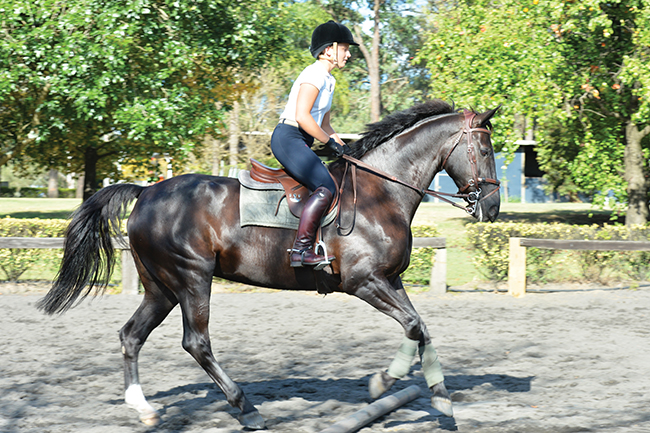
“Sav’s got good instincts, but she’s also done a lot of miles in the ring. She’s had three or four horses in the time she has been here, and she rides them all every day, very diligently, and at the shows, she gets lots of miles in the ring. In some respects, compared to some kids, say like Tom McDermott, it is not a lot. Tom was riding that number much younger, he was riding four horses at shows when he was eleven or twelve. That really accelerates the process, the number of horses you ride – it’s hard for kids with one horse, even if it is a nice horse, and they ride it every day and get plenty of help, it is very hard – if you have two you learn twice as fast, if you have four then four times faster. It’s about turning up to jumps in the ring, and the reality is that you learn as much, probably more, when you make a mistake, than when you get it right. If you do it right, then probably you don’t need to learn that, when you make a mistake, and it costs you a class, you think, okay, I am not going to do that next time. Making mistakes is a really important part of the progressing process.”
When you were saying to Sav today about keeping the mare straight and not letting her bulge and getting her to come off the right rein, Sav did that the instant you said it, you don’t often see a rider having a dressage lesson and the instructor says, do this, that it happens immediately…
“I think there are two things. I think Sav is very switched on about stuff like that, much more so than most kids of her age, and that’s the reason her progress has been so startling in many ways. But it is also that she is not hearing those instructions for the first time, she knows the problem, we’ve discussed it and worked on it, so I only have to mention it and she knows what to do. It is not a new problem, it is not a new solution, it is just a matter of reinforcement.”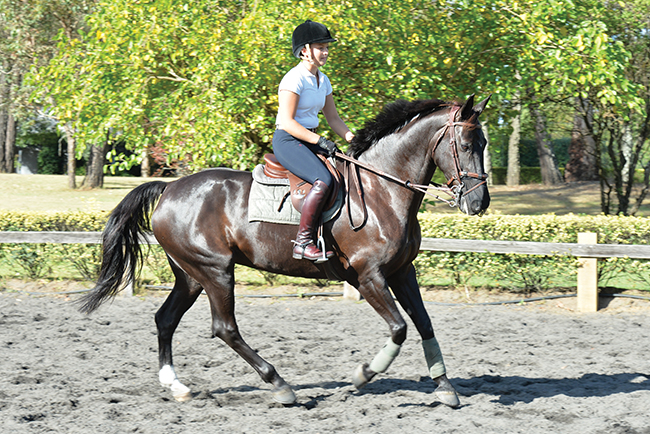
Let’s talk about the exercises you gave her today…
“What we were doing today, was a little unusual, leading up to a her first World Cup, in that normally you are giving them a solid jump in preparation. The horse is three days out of one of the biggest classes she has jumped, and only three weeks out of the biggest Royal Show she has jumped. So the horse needs to freshen up a little bit – it knows how to jump, it’s got a few little quirks and weaknesses, and we addressed all of them today: the right rein stuff, the little trot pole, starting off nice and relaxed, and that may well be why she was nice and relaxed when we started the canter, she was actually better than I had expected. I thought she might come out and be a little fiery and tense because she has jumped a few fast rounds over the past two weeks, and certainly a lot of big rounds, so she had every right to be a little wanting to get at them, but she was actually really good.”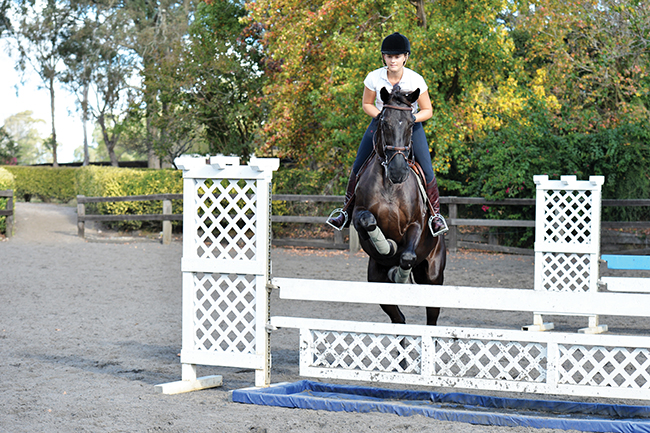
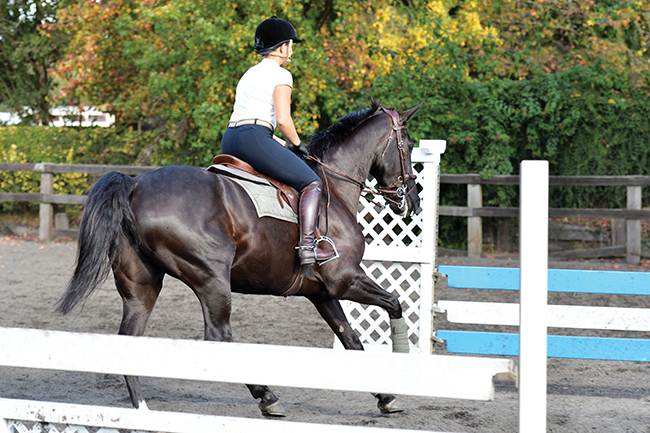
“The trot poles and then the little canter pole is just a great leveling exercise, they can’t really run at it, it makes them wait. The right angle turn with the little jump six strides, and then the back. Normally on the right rein, she’d get half way round and the mare would drop her shoulder and run a little bit, but she didn’t, she was really good.”
“The water we always jump because she is a little shy of water, she is a great water jumper, but she is a little shy, so when they are like that, you need to make sure they always see it all the time. We try to make it slightly different, how the water is jumped, so she gets really ho hum about the water. She is not one of those horses that will ever get blasé and land on the tape. She is always going to make an effort to get over it, but she has caught us out a couple of time – it cost her the Australian Championship in the Speed class, came off a little angle and she ducked out. The reality is that she is a little water shy, but if they are not a bit shy then they risk jumping into it. I’d rather a horse that was like that, and you had to train it often, but you know that you are always going to jump the tape, than one that you wonder if it is going to bother jumping over it.”
“We covered the things we wanted to cover, and the mare didn’t make it hard for us, she was really soft and relaxed. Normally preparing for a class like a World Cup, we’d be jumping some proper jumps two or three days out. If a show starts on Friday, we jump on Wednesday. The younger ones we sometimes jump the day before, if they are a bit feisty.”
It’s obviously a really nice combination, the mare and Sav – how do you advise clients who are looking for horses for their young riders?
“When we bought this mare, and Barichello, and he was eight years old, jumping a few little metre forties, this mare had been jumping one fifties for a couple of years, but we also bought a five-year-old. But Sav was already a very good flat rider, and was becoming a good jumping rider, so she’d got to the point where she could teach a horse, but there have been times with the young horse when Amber (Fuller) has had to get on her and have a little feel and explain to me what is going on. All my life I have taught and ridden, and until the last three years I have always jumped on horses and felt what’s happening. Now I am not doing it, Amber has been here for 20 years, she is like an extension of myself, and she can describe what is going on.”
What is the game plan now with the mare in the run up to the World Cup?
“She won’t see another jump, we’ll go to SIEC tomorrow, there is a metre forty or a metre fifty on the Saturday, and the World Cup on Sunday. My preference is the one forty, nice round, see the jumps, see the arena, see the water jump. If the water jump is not in the 1.40 but is in the 1.50, I’d be inclined to jump the 1.50 at least until the water jump. But if the water is in the 1.40, we’d just jump the 1.40 and leave it at that. Give her a nice round, keep a little spark in her – that’s not difficult, she has plenty of blood. She’s jumped quite a few big tracks in recent times so if she just has an easy start in the 1.40, that will be perfect for her going into the World Cup.”
“It is important to know your horse and to read it. If she was really fiery today, we would have considered starting her in the Friday class to take the edge off her, or twice on the Saturday. If the water is in the 1.40 and we start her in that, and she is really fiery, we can start her in the 1.50, I’m sure it will only be a one rounder, so it is no more than a jump off class. I’m hoping one round will be enough and leave plenty of gas in the tank.”
“When most people have their first World Cup start, it is usually the biggest course they have seen, it’s nice that Sav has done the Grand Prix at Sydney Royal, and she has jumped the Gold up at Elysian, so I don’t think when she walks out she is going to be intimidated by the jumps. The World Cup is just a Grand Prix with another name.”
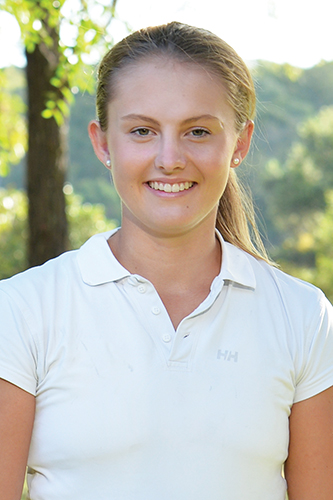 Savannah talks about her feelings about her first World Cup…
Savannah talks about her feelings about her first World Cup…
“It is very exciting, we can dull it down as much as possible, but it is still exciting.”
“The biggest step was when I jumped my first Grand Prix, I was so nervous – I can’t believe I’m doing this – but it was fine. Zensation was great, she was like a school master, she took me around and that gave me a lot of confidence, but I think since then we’ve started in a lot of those classes and it really comes down to the management, knowing that we want her to start in a couple of Grand Prix this year, so towards the end of last year and the beginning of this year, starting in as many Grand Prix as possible, just to get in ring and get comfortable jumping those heights. Also the horse jumping those heights with you. I think it is exciting, but at the same time, it is just another class, and I think I have to remember that.”
When you walk the course, what is George telling you?
“Initially he used to tell me a lot of things but now, I love having him there, but it is more having him there in case there is a question to ask. Often he leaves me to work it out myself. I like to walk my course twice, often I am the first one out there, and the last one out there. It is really important that I know where I am going, and know exactly what I want to do when I get in there. George is really helpful, especially with ring craft, his history of riding, and he has so much knowledge that I just draw off that and his experience.”
“George said to me a long time ago, when you are walking the course you have to envisage yourself on the course, doing it, I think that is really important. There are so many little areas where you can give yourself a better chance to jump the jump, or make up time… as Dad always says, it’s one percent here, one percent there, we only have to clear the jump by a centimetre, we have to take those little opportunities that we get.”
As it turned out, the World Cup was abandoned when Caitlyn Fischer tragically died in a cross country accident…
This article first appeared in the July 2016 issue of THM.
To view more articles with George Sanna, visit his who’s who page:

